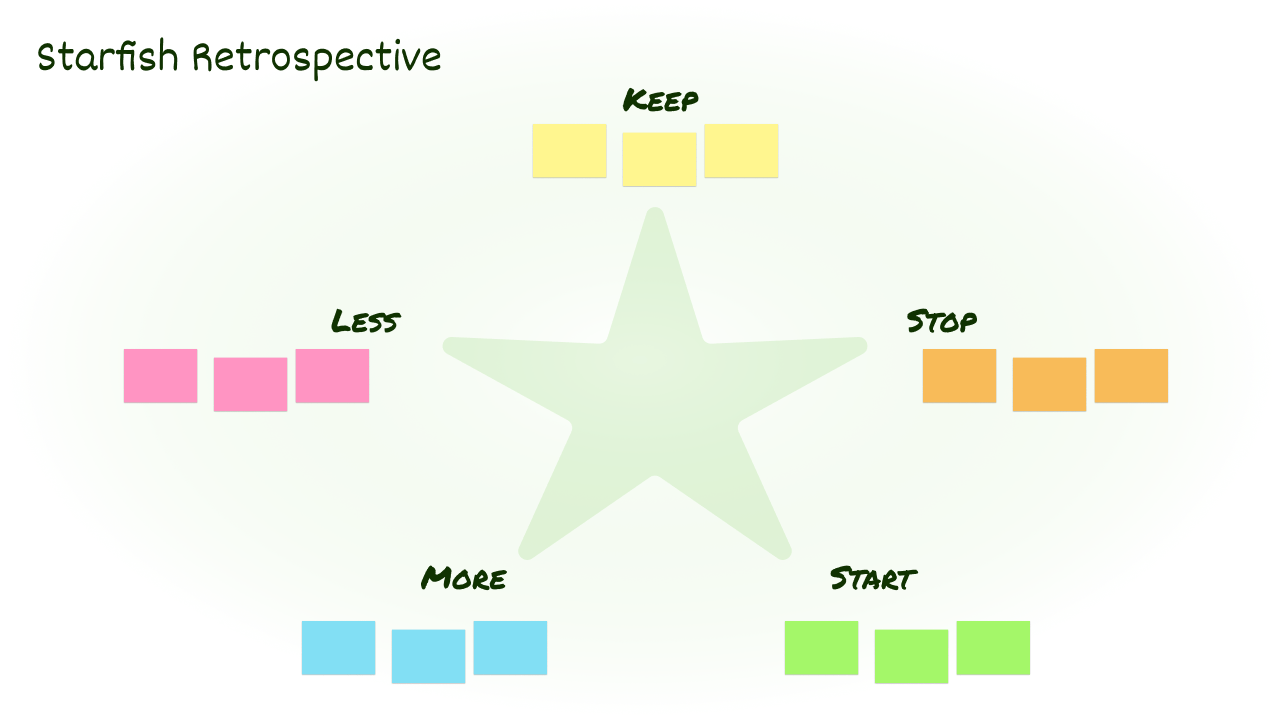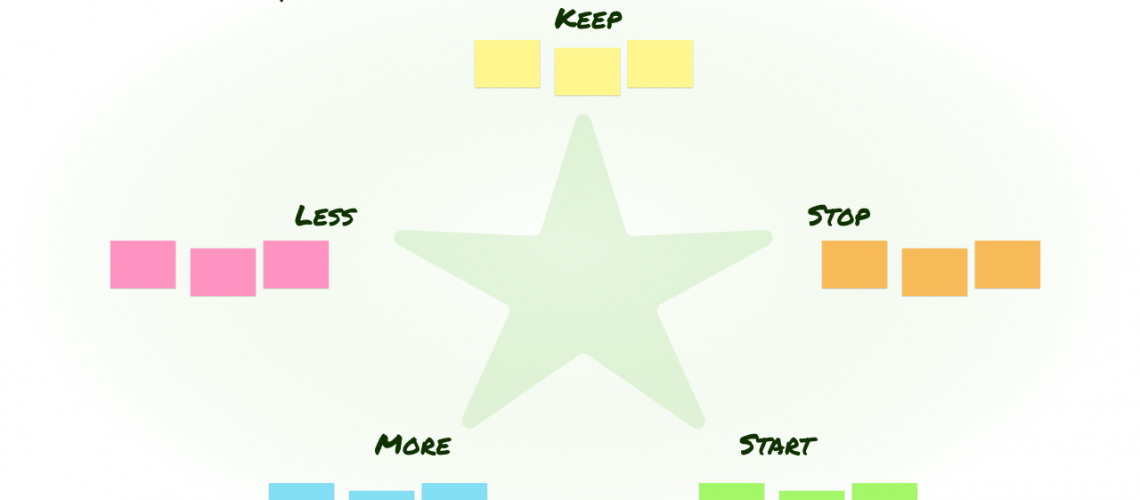Are you searching for the “Sprint Retrospective Starfish” on Google? Good choice - the starfish retrospective is one of the classics. I will explain to you how it works.
Sprint Retrospective Starfish
The 5 questions to ask in a starfish retrospective
The first thing you have to understand about the sprint retrospective starfish: It is called this way, because typically, 5 questions are asked - presented in the form of a starfish. This is what it typically looks like on a digital or paper whiteboard.

Each of these 5 area’s stands for one area of feedback, typically introduced with one word as a headline and instruction. You can either ask team members to leave feedback on the outside of the star, as the image indicates – or inside the 5 gaps that automatically form around a starfish.
Open questions
Keep: [Optional: Looking at the last sprint / weeks] What should we keep doing, keep as it is?
Stop: What should we stop doing?
Start: What should we start doing?
More: What should we do more of?
Less: What should we do less of?
There are the area’s Keep, Stop, Start, More, Less.
- Keep: [Optional: Looking at the last sprint / weeks] What should we keep doing, keep as it is?
- Example: You changed your daily, asking only one question. This produced better results, so you should keep it.
- Stop: What should we stop doing?
- Example: E.g., You were not satisfied with this new tool that is supposed to help you prioritize the product backlog. Let’s stop using it.
- Start: What should we start doing?
- Example: You feel like not everyone feels safe to speak up in your team, psychological safetySo you think about implementing a Team health check in 3 steps in your team.
- More: What should we do more of?
- Example: You love that one of your team members actively gives kudos in meeting. We want more of that from everyone in the team!
- Less: What should we do less of?
- Example: It is good to look at agile metrics like velocity from time to time - but not every sprint! This is way too much. Let’s do it less, only once a quarter in a retrospective.
Some of you might have noticed that the “sprint retrospective starfish” is pretty similar to the “Keep, Stop, Start” retrospective. But it is not the same - it adds too more words and has a more fancy starfish story around it 
What to be aware of when doing the Sprint Retrospective Starfish
As I mentioned in the last paragraph, this retrospective format has pretty many questions. Most retrospective ideas have 3 questions, this one has 5. So be sure to set a clear timebox!
Depending on how much time you planned for this retrospective, you might even ask everyone to write out their feedback in a way that is understandable. And then let everyone directly vote on the feedbacks so you only have to talk about those things that are prioritized by the team.
Conclusion - Sprint Retrospective Starfish
The sprint retrospective starfish is one of many retrospective ideas, one of the classics. If you like it, you will probably also like these 32 kickass retrospectives for beginners and professionals - right?
Most Agile Coaches and Scrum Masters run in circles...
...fixing superficial symptoms. Time to use psychology to foster sustainable mindset change.








